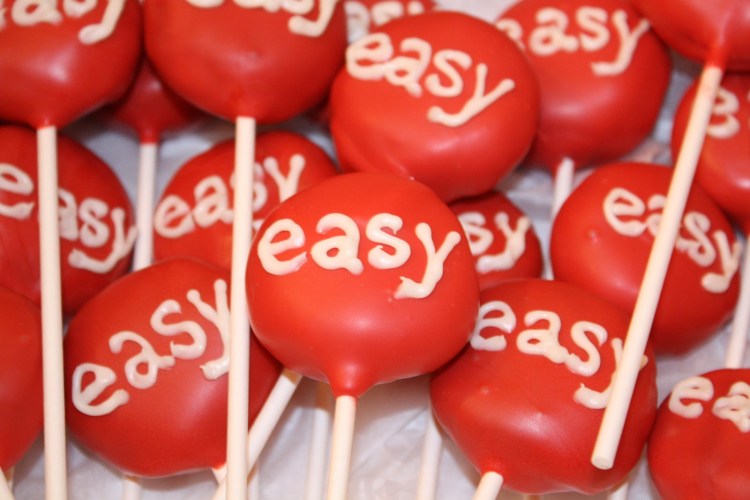Your customers don’t care what channel they’re on — they want to be able to shop, price check, and buy with no obstacles, or they’re going to bounce hard. Learn how the chief digital officer at retail giant Staples uses personalization to keep customers coming back every time in a world full of options.
Access this VB Live event on demand right here.
“The word omnichannel itself is a very company-focused term, versus a customer-focused term,” says Faisal Masud, chief digital officer at Staples. “We’re looking at ourselves as multiple channels, but the customer is looking at us as Staples. They don’t care what channel we are.”
For Masud’s team, that’s means fingerprinting their customers, and hoovering up as much data as possible from the first time they arrive at a Staples property, in any form, in order to discover what will bridge the gaps between each experience in a smart way that’s also useful to the customer.
The challenge, he says, is that the hardest channel is the most traditional one, and the one that’s always been cracked by broadcast and display advertising, with no real data behind its effectiveness: the store. Suddenly you’re faced with aligning a data-free environment with the digital world that your customer never quite disconnects from, as they shop analog with their phone in their hand.
You may have a rewards account, you’ve got our app, you’ve got notifications on, but unless you’re logged in, we don’t know who you are until you transact,” Masud explains.
So there are elements of personalization that are still highly dependent on the user behavior versus digital movement. How do you recognize those customers, keep them persistent or logged in, and what data points can you capture, if you’re diligent enough?
“It’s a tough balance for us,” Masud admits. But keeping the journey as smooth as possible in the meantime has been their goal. “We’ve been heavily focused on making sure that we absolutely nail the digital component first,” he explains, “While we try to figure out how to get better adoption on our apps and mobile web browser usage in the store, or hop on our in-store wi-fi. Find ways for our customers to interact with us.”
In-store customers are still digital customers, however — remember those phones in their hands.
“Consumers are going into stores, and they’re using their mobile phones for research purposes,” notes Stewart Rogers, VentureBeat’s director of marketing technology. “They’re on their smartphone looking at reviews for a product, but then they’ll buy that product right there and then, because they’re in front of it and they want it now.”
It’s not just reviews, Masud says. “We found a staggering number of customers just doing price checks both on mobile web and on our app while they were in the store, and price matching,” he explains. “In the high 50 to 60 percent range, just trying to get reviews and prices, and then a small percentage converting, and the rest not.”
Masud notes the importance of staying attuned to customer activity — and how much of it is about instant gratification. It’s meant instituting a price match policy two years ago in order to stay abreast of customer expectations.
And that was the impetus behind the pilot program for their Staples Advantage members, where they will proactively match-price for up to two weeks and then credit your account without you even asking.
“So if anyone ever comes to a price that’s lower than ours, we’ll go ahead and put the credit in your account,” Masud explains. “Our customers need that level of personalization.”
Rogers notes that this is one of the most innovative uses of personalization that companies can currently leverage.
“There’s a big movement to take advertising and make advertising look more like a personalized assistant than an advert,” he explains. “So we’re actually delivering, using personalization across all of the channels, right device at the right time, something that is incredibly useful to the customer, because we’ve done all that data work and we understand how that’s going to help them.”
That assistant role evolves personalization far beyond thinking of personalization from just a pure push marketing role.
“With their price-match system, using transactional data paired with known data in terms of who their customers are and how to get in touch with them, you are then giving them something that sits on the surprise and delight side of the equation,” Rogers says.
To learn more about the foundation you need to lay to leverage personalization, the data you need to dig into and ways to keep your campaign fresh and buzzing, catch up now with this free VB Live event!
Don’t miss out.
Access this VB Live event on demand here.
Webinar attendees will learn how to:
- Understand omnichannel engagement and personalization strategies
- Create a segment of one approach to marketing
- Enable collaborative filtering
- Build custom email campaigns that increase customer engagement
Speakers:
- Faisal Masud, Chief Digital Officer, Staples
- Stewart Rogers, Director of Marketing Technology, VentureBeat
Moderator:
- Wendy Schuchart, Analyst, VentureBeat
This VB Live event is sponsored by Blueshift.

